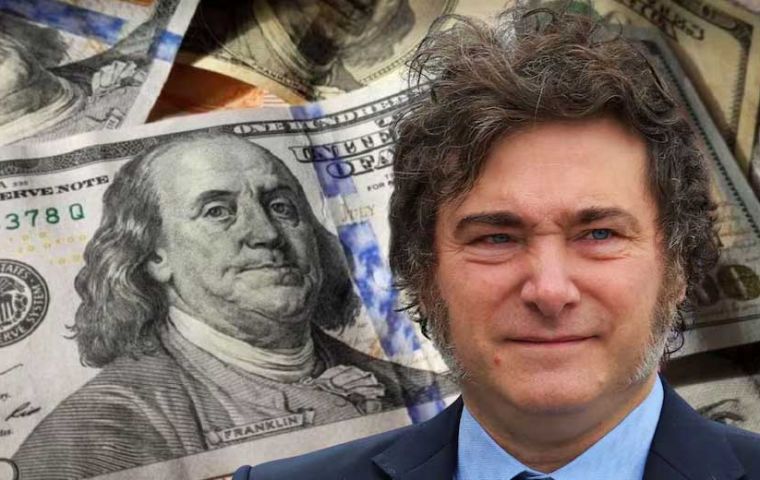MercoPress. South Atlantic News Agency
Argentine markets remained unconvinced despite US help
 Further volatility is expected next week before the midterms
Further volatility is expected next week before the midterms Despite interventions from the United States Treasury, financial tensions continue to escalate in Argentina just over a week before the Oct. 26 midterms. The wholesale dollar recorded its biggest daily rise on Friday in almost six weeks, closing at AR$1,450, a 3.5% increase. It briefly reached an intraday high of AR$1,475, putting it just 2.5% below the floating band ceiling of AR$1,489.10.
Additionally, the “blue” (black market) dollar sold for AR$1,475, while other quotations easily pierced the AR$1,500 threshold upwards.
The US Treasury actively intervened in the spot market for the second time this week, selling an estimated US$120 million on Friday after selling US$100 million on Wednesday. Cumulative sales in the last three sessions were estimated at around US$500 million, aimed at defending the official exchange rate band.
Despite these maneuvers and optimistic statements from US Ambassador Peter Lamelas about an imminent strengthening of the economic alliance, the market remains unconvinced. Analysts note that traders are barely managing to moderate the upward trend, and positive announcements from the US no longer elicit the same positive reactions.
The rise is driven by growing demand for pre-election hedging and the expectation of a change in the exchange rate regime after the elections. This pressure is compounded by an injection of US$2 trillion into the local financial system due to low renewal rates on local debt maturities.
Government officials reportedly remain “calm” due to confidence in the US administration's “firepower” and are monitoring the market closely, though they expect more volatility next week. According to financial circles sources in Buenos Aires, they hope to use the US backing -including the rumored US$20 billion currency swap- to stabilize the dollar and maintain the current exchange rate system after Oct. 27.




Top Comments
Disclaimer & comment rulesCommenting for this story is now closed.
If you have a Facebook account, become a fan and comment on our Facebook Page!